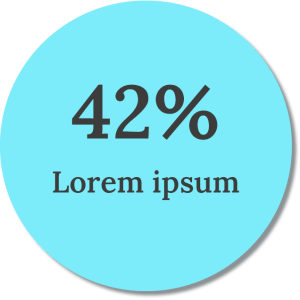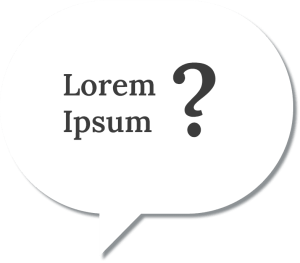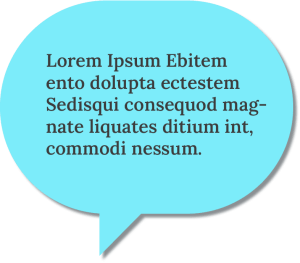The introduction to your presentation is crucial for success
7 creative ideas for your presentation introduction
Get your next presentation off to a flying start and make an exclamation mark right at the beginning. We’ll show you 7 creative ways to inspire your audience. This will ensure that everybody follows you from the very first slide. Because once your audience’s attention is lost, it’s difficult to regain it. This makes it all the more important to captivate, surprise, convince or entertain right from the start. Just as it suits your presentation, your target group and your topic. Let our ideas and suggestions inspire you and try out which presentation introduction works best for you.

1.
Introduction with facts

Use well-researched facts for your presentation introduction and present them as visually appealing infographics. Even facts that your audience may already know can be brought back to mind. Use comprehensible and concrete formulations. Instead of “the proportion of newly registered electric cars is 32%”, write “every third newly registered car is an electric car”. Don’t forget to cite the sources of your facts.
By starting with facts, you are setting the tone for clear messages, verified information and credibility right from the start. This is an advantage for a technically or commercially interested audience.
2.
The personal story
Start your presentation with a personal story that has a direct or indirect connection to your presentation topic or that is suitable as an analogy. Tell us what personal connection you have to the topic of your presentation or what your motivation is. Please note: stories with breaks and setbacks are more exciting than smooth success stories. Stay authentic, tell your story succinctly, but don’t exaggerate. This will win the sympathy of your audience.
A personal story is a good icebreaker if the audience doesn’t know you. An emotional introduction can also help with conflict-laden topics. Such an introduction is rather inappropriate for a tightly timed and decision-oriented audience.
3.
The question to the group

Ask the audience a question. Simple questions that can be answered with a show of hands are suitable. Alternatively, you can use digital survey tools. Make sure that your question or survey is related to your topic. If you are giving a presentation on mobility, you can ask, for example, “Which of you traveled by public transport today?” Also respond directly to the answers you receive and use them to lead on to your topic.
Use a question and answer session to involve your audience in your presentation. This method is suitable for discussion-intensive topics, but also to skip the usual restless phase at the beginning of a presentation.
4.
The inspiring quote

It is the classic presentation opener: a quote. Motivational sayings, words of wisdom and visions are usually formulated in general terms, making it easy to establish a connection to your presentation topic. Steve Jobs is certainly one of the most frequently quoted personalities in business presentations. But it doesn’t necessarily have to be a quote from a famous person to open your presentation. A customer quote that formulates a need or a common problem will draw your audience into the topic very quickly and concretely.
Quotes are well suited as an introduction if you want to underline the relevance of your presentation topic or place it in a larger context of meaning, e.g. innovation, future, responsibility.
5.
The topical reference
Link your topic to current events. A news report, a current survey or a headline can provide the perfect introduction. You can usually even find daily news on hot topics and trending topics.
A tip: if you regularly present on a certain topic, use tools such as Google Alerts to be automatically informed about news that you can spontaneously incorporate into your presentation.
The introduction with a topical reference is suitable for discursive topics and topics with social relevance. It emphasizes your expert knowledge and the importance of your presentation.
6.
The multimedia element

You can liven up the start of your presentation with a film clip, a video or a small slide show. You are sure to get the attention of your audience. Anything is possible, from entertaining elements to mood videos that get people excited about big topics. However, make sure that a multimedia element at the beginning is only an “appetizer”. Prefer short formats.
Multimedia introductions are suitable for topics with a motivating character. Such an introduction raises the audience’s expectations. The presentation that follows should also be lively and visually appealing.
7.
Metaphors
The metaphor method is a stylistic device that is suitable for the start of a presentation and beyond. Metaphors help to convey your messages and make your statements memorable. Metaphors can be used visually and in terms of content/text. Use simple symbols that match your main messages. If a metaphor runs through the entire presentation, a strong image will be anchored in the minds of your audience. Metaphors can come from a wide variety of areas. Metaphors from the fields of sport, nature/weather or travel are popular in business presentations.
Presentations on complex topics in particular benefit from metaphors, as they break down facts into simple symbols. You can read more about the use of visual metaphors here: Using Visual Metaphors to Enhance Your Storytelling in Presentations